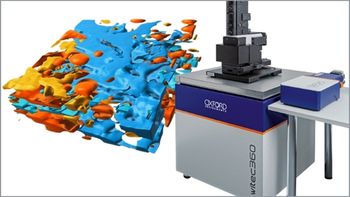
Raman-Based System Created to Examine Colorectal Cancer
Scientists from the Czech Republic developed an automated classification pipeline meant to provide real-time in vivo examinations of normal and cancerous colorectal tissue.
In a recent study led by scientists at the University of Chemistry and Technology in Prague, Czech Republic, scientists created an automated classification pipeline that uses Raman spectroscopy to provide real-time in vivo examinations of normal and cancerous colorectal tissue. Their findings were published in Spectrochimica Acta Part A: Molecular and Biomolecular Spectroscopy (1).
Colorectal cancer (CRC), which typically stems from polyps, or growths, on the inner lining of the colon or rectum, is the third most common malignancy worldwide (2). CRC cases are expected to increase this year, with the American Cancer Society estimating approximately 150,000 new cases of CRC in 2024 (3). A diagnosis of colorectal cancer typically requires confirmation via a tissue biopsy during a colonoscopy, which allows the cancer tissue to be further classified during consequent histopathological examination. While this practice is standard in most countries, the tissue biopsy is an invasive procedure, and optical colonoscopies that include biopsy are associated with a 5% rate of complications. As a result, scientists have begun searching for less invasive yet sufficiently sensitive and accessible methods.
Recently, scientists have begun to consider Raman spectroscopy as an optimal method for this approach (1). In vivo Raman spectroscopy, in addition to being mostly non-invasive, has shown vast potential in discriminating between various types of normal and cancerous tissues. This is achieved by spectral signatures that show different biomolecular compositions of normal and cancerous tissue. However, founding Raman effects only occur in approximately 1 inelastically scattered photon in 106 scattered photons, which can significantly impede real-word Raman spectroscopy applications. Therefore, for scientists to properly classify Raman spectra, most need to be pre-processed. Though Raman spectra processing can be complex, time-consuming, and manual, scientists continue to look for a suitable and objective instant classifier that enables real-time evaluation of in vivo spectra.
In this study, the scientists developed an automated classification pipeline used in vivo Raman spectroscopy for the real-time examination of colorectal tissue to detect colorectal carcinoma or adenomatous polyps. First, 377 subjects, in addition to routine colonoscopies, underwent in vivo acquisitions of Raman spectra of healthy tissue, adenomatous polyps, or cancerous tissue, which were conducted using a custom-made microprobe (1). The spectra were then loaded into the pipeline and pre-processed in several steps, including standard normal variate transformation and finite impulse response filtration. The pre-processed spectral data was checked for quality based on signal-to-noise ratio, with suitable spectra being decomposed and classified using principal component analysis and a support vector machine, respectively.
After five-fold cross-validation, the developed classifier showed 100% sensitivity toward adenocarcinoma and adenomatous polyps; overall accuracy was 96.9% and 79.2% for adenocarcinoma and adenomatous polyps respectively. Alongside these findings, the scientists created an application with a graphical user interface to facilitate the use of their data pipeline by medical professionals in clinical environments. Though there is still more to research to be done, the scientists find this approach to be a viable means of reducing the number of biopsies needed to properly diagnose colorectal cancer.
References
(1) Vališ, J.; Fousková, M.; Janstová, D.; Habartová.; et al. Automated Classification Pipeline for Real-Time In Vivo Examination of Colorectal Tissue Using Raman Spectroscopy. Spectrochim. Acta Part A: Mol. Biomol. Spectrosc. 2024, 313, 124152. DOI:
(2) What is Colorectal Cancer? American Cancer Society 2024.
(3) How Common is Colorectal Cancer? American Cancer Society 2024.
Newsletter
Get essential updates on the latest spectroscopy technologies, regulatory standards, and best practices—subscribe today to Spectroscopy.





